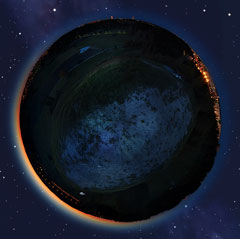

Hi, everybody. I thought I would take some time to write up a thread describing, step by step, how to create a custom landscape in Stellarium. A custom landscape will give you the ability to 'preview' the night sky from your favorite observing location, and can help you to identify faint constellations by giving you a location reference on the ground. It's also just plain slick to have your own personal landscape loaded into Stellarium! Antamedia Hotspot 1.4.6 on this page. I've got ~40 images illustrating the process, and each post restricts to 10 images, so this will take several posts in the thread to get through.
Hi, everybody. I thought I would take some time to write up a thread describing, step by step, how to create a custom landscape in Stellarium. A custom landscape will. Stellarium is a planetarium software that shows exactly what you see when you look up at the stars. It's easy to use, and free.
So let's get started! Step 1: Take photos of your favorite observing location These photos should be taken of the horizon, while standing (or sitting) at your favorite observation area, during the day. They should be ordered from left to right, with about 20% overlap between each photo. Only shoot the horizon; don't try to capture the area around your feet.
Here are the first few photos from my sample panorama: Notice how I've overlapped the photos a bit. Be sure you take enough photos that you complete a full 360 degree field -- if you leave any gaps, the landscape won't work right! It took me 11 photos to get a full set to assemble a panorama.
For each photo you take in the sequence, each must follow these three rules: 1. The photo should overlap about 20% of the previous photo's edge 2. The photo should be framed so that the horizon is near the TOP of the image. The photo must ALWAYS be to the right of the previous photo -- no moving up and down, or back to the left. Always move left to right.
Don't skimp on #2 to achieve #1 -- if you have tall parts of your horizon (trees, etc) then do your best to capture them, but ONLY if it won't cause the overlap to shrink too small. Step 2: Load the images into hugin, the panorama stitcher Now that you have your horizon photos, copy them from your camera card into a temporary directory: Before continuing, make sure you have a copy of installed on your computer. If you run Linux, this should be as simple as yum install hugin or apt-get install hugin or something like that. Hugin is a free, open-source panorama stitcher that works for Linux, Windows, and possibly other OSes. The instructions to follow assume you're using Hugin on a Linux machine; if you're using Windows you'll have to make some adjustments as you go.
OK, so since you have Hugin installed, let's get going creating that panorama. The first thing you'll have to do (on Linux, at least) is create a symlink to work around a bug I found. The symlink just routes the current directory back onto itself: Next, start up hugin by running 'hugin' at the command line. Ohio Diesel Emission Reduction Grant Program. The startup window has a bunch of tabs across the top that we're going to mostly ignore. For now, notice the 'load images' button. Iveco Power Keygen 2017 - And Torrent 2017. Click that to load your panorama source images. Select all of the images from your panorama and click Open.